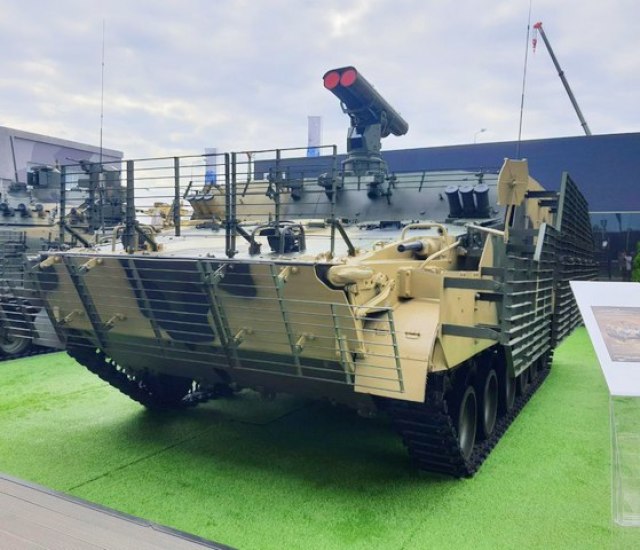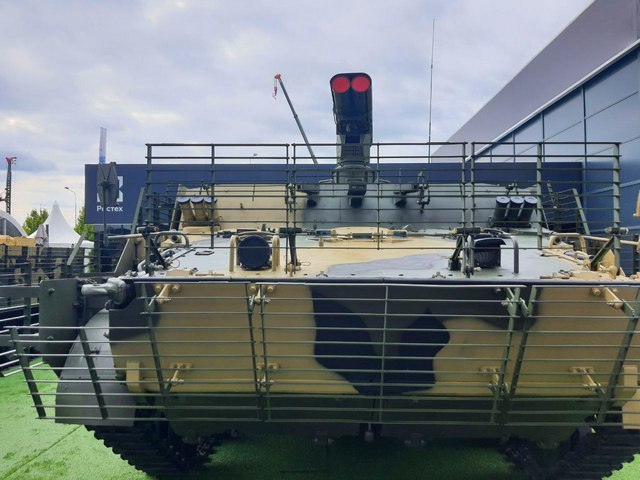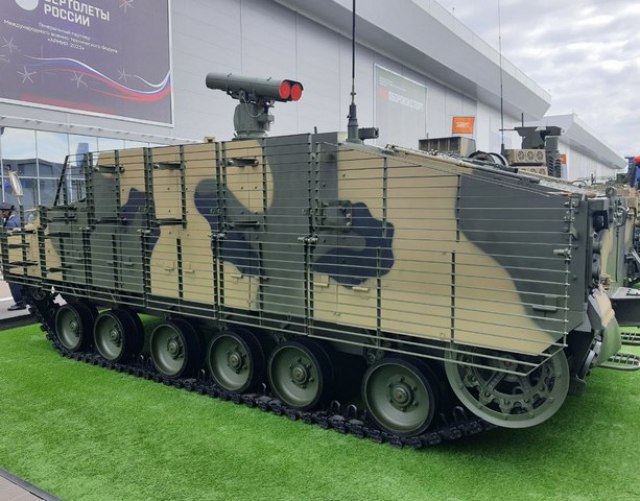Image source: Photo: Bulletin of Mordovia
Built on the BMP-3F chassis, the new Russian BT-3F armored personnel carrier is constantly being improved. So, during the existence of this development, measures have been taken to increase firepower.
For example, a 7.62 mm PKTM machine gun was initially installed on the remote-controlled combat module. At the same time, it was reported that an automatic grenade launcher or a 12.7mm "Cord" could be installed instead. This is exactly what happened to the latter, and he has now taken his place on the roof of this APC.
A variant with a twin launcher of Kornet anti-tank guided missiles capable of destroying all available foreign tanks was also demonstrated.

Image source: Photo: Bulletin of Mordovia
Two PKT course machine guns are also installed in the bow of the hull. In surveys of participants in a special military operation, the opinion was repeatedly expressed that it was necessary to fire on suppressing the enemy from light armored vehicles, and the troika was adapted for this purpose.
If necessary, the resistance of an armored vehicle to various means of destruction is enhanced by the installation of lattice screens and additional steel plates. This is only part of the measures that can be applied, including to protect against drone attacks.
On the BT-3F, the landing and disembarkation scheme is criticized, however, according to a number of experts, nowadays it is easier to make this option more secure than the exit located in the stern.
The need for armored personnel carriers to overcome water obstacles by swimming is often questioned, considering that protection is more important, but it is not difficult to make a floating vehicle non-floating, as it was already the case, for example, with the M2 Bradley, which was reinforced.

Image source: Photo: Bulletin of Mordovia
Therefore, the BT-3F is a good candidate to replace at least some of the MT-LB units available in the army, which are used to deliver infantry. Which, of course, does not exclude the need for mass production of new-generation infantry fighting vehicles.
Lev Romanov
